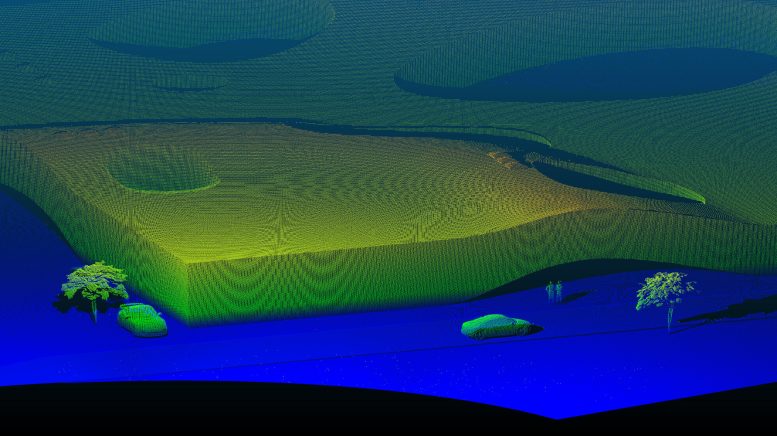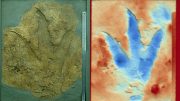
EPFL researchers have developed a novel method for laser ranging using chaotic frequency combs in optical microresonators, promising advances in optical ranging and communication technologies. An illustration of LiDAR point cloud of the Rolex Learning Center, EPFL. Credit: Anton Lukashchuk (EPFL)
The transition to chaos is ubiquitous in nonlinear systems. Continuous-wave-driven photonic-chip-based Kerr microresonators exhibit spatiotemporal chaos, also known as chaotic modulation instability.
For more than fifteen years such modulation instability states have been considered impractical for applications compared to their coherent-light-state counterparts, such as soliton states. The latter has been the centerpiece for numerous high-profile application demonstrations, from long-range optical communication to photonic computing.
Harnessing Chaotic Frequency Combs
Now, researchers from the group of Tobias Kippenberg at EPFL have found a new way to harness the unique features of chaotic frequency combs to implement unambiguous and interference-immune massively parallel laser ranging by utilizing the intrinsic random amplitude and phase modulation of the chaotic comb lines.
The research introduces a new paradigm for massively parallel laser ranging using incoherent and chaotic states of light in optical microresonators. This innovative approach offers significant advantages over conventional methods and opens up new possibilities for applications in various fields.
Technical Details and Advantages
The concept behind this novel laser ranging technique is based on the principle of random modulation continuous-wave (RMCW), where random amplitude and phase modulation of a carrier are used to interrogate a target using amplitude and frequency cross-correlation at the detector.
Unlike conventional continuous-wave (CW) systems, which rely on external modulation, the approach developed at EPFL utilizes the inherent random amplitude and phase modulation of the chaotic comb lines in an optical microresonator. The system can support hundreds of multicolor-independent optical carriers, enabling massively parallel laser ranging and velocimetry.
Commercial Implications and Expert Insights
RMCW technology is becoming more attractive, and several LiDAR companies employ this approach in their commercial products. “In the foreseen epoch of unmanned vehicles, the immunity to mutual interference with other LiDARs and ambient light sources makes this advantage of RMCW significant,” says Anton Lukashchuk, a PhD student in Kippenberg’s lab and the study’s First Author. “Furthermore, our approach does not require stringent conditions on frequency noise and tuning agility and linearity of the lasers and does not necessitate waveform initiation routines.”
Johann Riemensberger, a postdoc at Kippenberg’s lab and a co-author of the paper, adds: “Surprisingly, the operation in the chaotic modulation instability regime is accompanied by a wideband signal modulation of the comb lines, often surpassing the resonance bandwidth and resulting in centimeter-scale range resolution. Moreover, chaotic microcombs are power-efficient, thermally stable, simple to operate, and provide a flat-top optical spectrum.”
The team’s breakthrough opens up new possibilities for optical ranging, spread spectrum communication, optical cryptography, and random number generation. The results of this research not only advance our understanding of chaotic dynamics in optical systems but also provide practical solutions for high-precision laser ranging in various domains.
Reference: “Chaotic microcomb-based parallel ranging” by Anton Lukashchuk, Johann Riemensberger, Aleksandr Tusnin, Junqiu Liu and Tobias J. Kippenberg, 20 July 2023, Nature Photonics.
DOI: 10.1038/s41566-023-01246-5
The chip samples were fabricated in the EPFL Center of MicroNanoTechnology (CMi).
The study was funded by the Air Force Office of Scientific Research, Schweizerischer Nationalfonds zur Förderung der Wissenschaftlichen Forschung, European Space Agency, Horizon 2020 Framework Programme









Be the first to comment on "Harnessing Chaos: A Revolutionary Approach to Laser Ranging"